This Content Is Only For Paid Subscribers
In Part One, discover the interplay between geopolitics and economic sentiments, delve into the dichotomy of progress and challenges in the design industry, and explore the evolving landscape of workplace experiences in this video with DesignIntelligence’s Dave Gilmore as he offers valuable insights for decision-makers and professionals alike.
The design community needs to observe and understand the new work behaviors that have emerged during the pandemic. Geopolitical dynamics have a significant impact on economies and the investment community, which in turn affects the design professions. The design community needs to move away from old paradigms and embrace collaboration and innovation. The workplace design community needs to reimagine how workplaces are designed and consider factors such as longer workdays, hybrid work behaviors, and the human experience. The office will still be important, but it needs to be a flexible and adaptive space that accommodates human needs. Office buildings may need to become multipurpose spaces that offer various amenities and services. Manufacturers are investing in home office furnishings due to the belief that the hybrid work model is here to stay.
Transcript
It is important for the design community in this space to really spend time observing what are the new work behaviors.
Everything we look at through DesignIntelligence begins perhaps through a different perspective. We begin everything on a very macro, and then we move down into the micro. What we mean by that is we regularly track and watch geopolitical changes occurring around the world in China, the China Taiwan tension, the Russian-Ukrainian war that’s going on, the dynamics across the EU, what’s happening in the United States, et cetera, et cetera. And you see, we are convinced that geopolitical dynamics are what send reverberating waves across economies of the world. Those economies then respond to these geopolitics. The investment community, whether it’s the investment community and technology, or healthcare pharmaceuticals or the built environment, are all watching these economic ramifications, implications, waves going through, and it either raises their confidence in investment or it dampens it down a bit. So we begin everything looking first of all at what’s happening geopolitically and how that affects economies, and then how that affects the investment community and their sentiments in particular into the built environment. As we look to the future of architecture, design and engineering, all of which are designed professions, in the greater built environment context, we are seeing how should we say ‘it was the best of times and the worst of times’ I think Mr. Dickens wrote, because right now it is extraordinary seeing the wonderful things happening in design. We’re seeing new constructs of design materials being developed and put together unusual and wonderful ways. We’re seeing an explosion of technology that’s making us more efficient and effective in our design. We’re starting to better understand what we call the digital data tsunami that’s coming across the industry and trying to reconcile our position within that tsunami. And of course, we are right in the middle of being radically challenged, disrupted by artificial intelligence and how that’s now becoming manifest in the day-to-day. Those are all the good things. On the downside, we are still stuck in some very old paradigms. The way that we construct, the way that we design and construct is very fragmented. It’s very rare that you really see integrated project delivery as a way of delivering projects. We are continuing to, in the United States, operate mostly on this silo-to-silo-to-silo being forced together through contracts. And so that will continue to hamper our progress going forward because it is the opposite of collaboration. We see a tremendous amount of challenges coming out of the academy where the design professions are taught and educated because we’re concerned that they are too stuck in an old paradigm of education as opposed to the relevance that’s necessary for this rapidly changing world we find ourselves in. We’re in great times and not so great times all at once, in this space There are too many both practical and economic reasons to not return to that model. The practical reasons are the amount of time and money that is wasted in commuting back and forth. The cost to an employee of having to get ready every morning and spend an hour or two to get ready and an hour or two to commute, only to spend a few hours in a cube to get another hour plus to come home. And you just think, how impractical is that? When I have proven through this period that I’m radically productive sitting in my home office doing the work. Economically it really makes little sense to the individual to spend the amount of money that they have to spend commuting coming back and forth when we know that productivity has actually been the same or it has risen. I think the human experiences come to the fore here of how workers in the work environment are viewed. Do we understand human experience down to the individual, not to the general faceless populace, but to the individual? Do we understand how to define human experience? And then using that definition, how would we validate human experience through measurement, through benchmarking, through an understanding? Even if we did come up with these measures, so what? What is that going to do for us? How is that going to change the way that the design community approaches human experience design in the workplace? These are things we talk about, we read articles about, but who is actually putting their heads down and diving deep into the psychology of the human worker within the American office context, the knowledge worker context, and saying there’s a better way, there’s a better way. I think that it’s critical for those who have been in this space for so long (ex. architects, interior designers, MEP, engineers, structural engineers, building product manufacturers), all of these stakeholders to come together in a collaborative way and re-explore what does it mean to design wholly for the human experience that results in: higher productivity, predictable profits for the companies you work for, significant retention of good talent within the office space, and delighted clients. How do we get to that?
Read the Full TranscriptGeo-Political Dynamics (1:03):
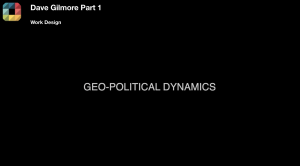
Perpetual Hope (4:40):
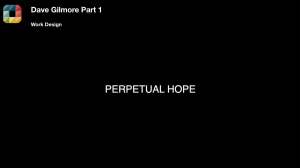 There seems to be this perpetual hope that things will return to whatever they were at any given stage of whatever they were, instead of understanding that the world will never stop progressing and moving forward, and therefore we must have what I’m going to call a windshield perspective instead of a rear view mirror perspective.
There seems to be this perpetual hope that things will return to whatever they were at any given stage of whatever they were, instead of understanding that the world will never stop progressing and moving forward, and therefore we must have what I’m going to call a windshield perspective instead of a rear view mirror perspective.What Are You Going To Do? (05:05):
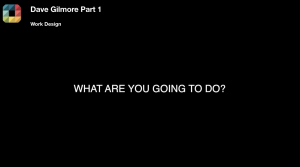 I think there were many pre pandemic behaviors that caught us in this moment where we are. The question that I have for the design community now is, so what? What are you going to do about it? Are you going to just cross your fingers, hold your breath and hope that everything will go back? Or are you going to look in the mirror and say, how do I redefine and reimagine what my role is in design around places and spaces where workers come and go from?
I think there were many pre pandemic behaviors that caught us in this moment where we are. The question that I have for the design community now is, so what? What are you going to do about it? Are you going to just cross your fingers, hold your breath and hope that everything will go back? Or are you going to look in the mirror and say, how do I redefine and reimagine what my role is in design around places and spaces where workers come and go from?A Way Of Reimagining (5:36):
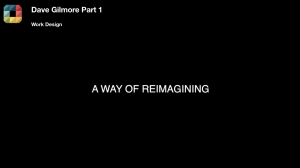 One of the so fabulous areas of practice for decades has been the workplace design community that has put places and spaces together that optimize human productivity and allow us to have a good time when we’re at work and to connect with each other, collaborate, et cetera. We see a significant change certainly that occurred through the catalyst of the pandemic. There is a critical need for this community now coming after this pandemic to understanding a way of reimagining how the workplaces might be considered.
One of the so fabulous areas of practice for decades has been the workplace design community that has put places and spaces together that optimize human productivity and allow us to have a good time when we’re at work and to connect with each other, collaborate, et cetera. We see a significant change certainly that occurred through the catalyst of the pandemic. There is a critical need for this community now coming after this pandemic to understanding a way of reimagining how the workplaces might be considered.Volitional Blindness (06:18):
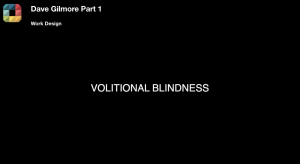 We were stuck in this belief in infinite growth, that you just keep growing and growing and growing and designing and designing and building and building, and somehow or another, it would just all work out. When the reality is that we were really applying what I call volitional blindness to the facts. There were only so many people that could fill so many seats in buildings and in offices. We were blind to the facts of what it really cost workers to commute to work, and the burden that put on families and workers all over the world. We’re blind to the fact that even though we were putting beautiful places and spaces together, it wasn’t really raising productivity at a level that, the cost was higher than the benefit in many, many cases.
We were stuck in this belief in infinite growth, that you just keep growing and growing and growing and designing and designing and building and building, and somehow or another, it would just all work out. When the reality is that we were really applying what I call volitional blindness to the facts. There were only so many people that could fill so many seats in buildings and in offices. We were blind to the facts of what it really cost workers to commute to work, and the burden that put on families and workers all over the world. We’re blind to the fact that even though we were putting beautiful places and spaces together, it wasn’t really raising productivity at a level that, the cost was higher than the benefit in many, many cases.It Actually Worked! (07:14):
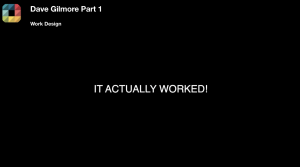 I think that what was interesting is we watched technology immediately spring forward during the pandemic to fill the gap of our virtuality gap that we needed. But that technology had been around for a few years and been getting better and better, and certainly was thrown into the fire to really test its metal during those first initial months of the pandemic and it bore up well. We were ready for a major event, we just didn’t know it. And technology sprung forward to fill that gap.
I think that what was interesting is we watched technology immediately spring forward during the pandemic to fill the gap of our virtuality gap that we needed. But that technology had been around for a few years and been getting better and better, and certainly was thrown into the fire to really test its metal during those first initial months of the pandemic and it bore up well. We were ready for a major event, we just didn’t know it. And technology sprung forward to fill that gap.It’s Here To Stay (7:49):
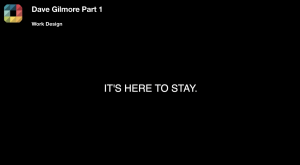 When we look at the future of work and what does that mean coming out of in this new reality of hybrid work and all of its permutations of expression that are out there, we believe it’s here to stay. It actually is. We’re convinced at DesignIntelligence that never again will you see a hundred percent of your employees in a hundred percent of the seats a hundred percent of the time, like we saw before.
When we look at the future of work and what does that mean coming out of in this new reality of hybrid work and all of its permutations of expression that are out there, we believe it’s here to stay. It actually is. We’re convinced at DesignIntelligence that never again will you see a hundred percent of your employees in a hundred percent of the seats a hundred percent of the time, like we saw before.What Is Work? (09:16):
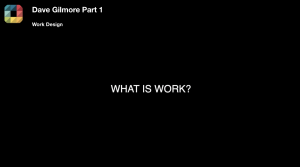 I think that what’s happened is pragmatically the American worker has changed how they define what is work and work is no longer nine to five. One of the things we see is the typical worker is working longer, but they’re taking breaks that are longer through the day to be able to refresh themselves, go for a walk, go down to the corner and get a hamburger or a salad, spend an hour and a half scratching the dog and walking the dog and eating at lunch, and then coming back and working, and they’ll work till seven or eight in the evening because there is more freedom to do that. And in that refreshment that they receive periodically through that elongated day is allowing them to have a much higher level of productivity.
I think that what’s happened is pragmatically the American worker has changed how they define what is work and work is no longer nine to five. One of the things we see is the typical worker is working longer, but they’re taking breaks that are longer through the day to be able to refresh themselves, go for a walk, go down to the corner and get a hamburger or a salad, spend an hour and a half scratching the dog and walking the dog and eating at lunch, and then coming back and working, and they’ll work till seven or eight in the evening because there is more freedom to do that. And in that refreshment that they receive periodically through that elongated day is allowing them to have a much higher level of productivity.Observe The Behavior (10:07):
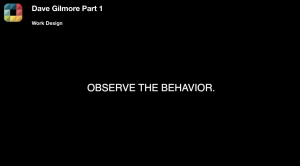 It is important for the design community in this space to really spend time observing what are the new work behaviors; whether they are hybrid work behaviors or people in office behaviors. Longer days are certainly a part of it. Longer come and go periods, as I just mentioned. And people are really looking for ready access to comfort, being outside collaborative spaces, easy access to conveniences in the workplace so that it becomes an easier dynamic for them to do their work. Redefining the nature of work is essential to redesigning the nature of the workplace.
It is important for the design community in this space to really spend time observing what are the new work behaviors; whether they are hybrid work behaviors or people in office behaviors. Longer days are certainly a part of it. Longer come and go periods, as I just mentioned. And people are really looking for ready access to comfort, being outside collaborative spaces, easy access to conveniences in the workplace so that it becomes an easier dynamic for them to do their work. Redefining the nature of work is essential to redesigning the nature of the workplace.The Human Experience (11:00):
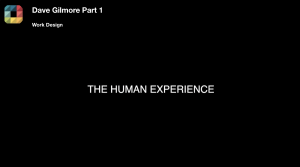 The human experience is the central thing. When you think about the workplace, we’re thinking about humans that come to a place to do work. And more often than not, over centuries and certainly over the 20th century leading up to this pandemic and the 21st century, we were focused on the work more than the human that did the work. If people did think of the human experience, it was the exception to the rule, while the rule was about the work.
The human experience is the central thing. When you think about the workplace, we’re thinking about humans that come to a place to do work. And more often than not, over centuries and certainly over the 20th century leading up to this pandemic and the 21st century, we were focused on the work more than the human that did the work. If people did think of the human experience, it was the exception to the rule, while the rule was about the work.Stop The Silliness (13:17):
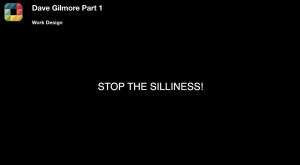 Almost everything that we’re talking about is a design problem, a design challenge and no one knows how to do that better than architects, interior designers and engineers. If we put our hearts and our minds to this, we can break through. We can come up with it, but the dysfunction that I mentioned earlier of this industry operating in a fragmented, non-collaborative, silo based way, seeing each other as somehow competitors rather than collaborators, is preventing us from these breakthroughs that are necessary. We have got to stop the silliness of thinking everybody’s out to get our intellectual property or win over us. We’ve got to get to a place where the design community becomes a design community rather than design competitors, and that’s how we’ll break through.
Almost everything that we’re talking about is a design problem, a design challenge and no one knows how to do that better than architects, interior designers and engineers. If we put our hearts and our minds to this, we can break through. We can come up with it, but the dysfunction that I mentioned earlier of this industry operating in a fragmented, non-collaborative, silo based way, seeing each other as somehow competitors rather than collaborators, is preventing us from these breakthroughs that are necessary. We have got to stop the silliness of thinking everybody’s out to get our intellectual property or win over us. We’ve got to get to a place where the design community becomes a design community rather than design competitors, and that’s how we’ll break through.They Come For Interaction (14:10):
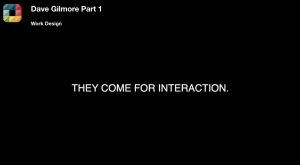 The office is going to be critical regardless. It’s essential to bringing humans together. You have to have a place to sort to bring everyone together. When you do that, you have to have environments that are designed from the moment you approach the door through the entire experience of being in that space to even the exiting in that space, has got to have collaboration front and center. People will come to the office, not to just sit anymore in a cube by themselves, they want to come to interact with others. The work in office has to be a place where people can come together, not show up and sit in isolated places. There are times though for people to have isolation. There are times when we need private think time, private conversation time, private work time, and so you have to build environments and design environments that are flexible and adaptive to the needs of the workforce.
The office is going to be critical regardless. It’s essential to bringing humans together. You have to have a place to sort to bring everyone together. When you do that, you have to have environments that are designed from the moment you approach the door through the entire experience of being in that space to even the exiting in that space, has got to have collaboration front and center. People will come to the office, not to just sit anymore in a cube by themselves, they want to come to interact with others. The work in office has to be a place where people can come together, not show up and sit in isolated places. There are times though for people to have isolation. There are times when we need private think time, private conversation time, private work time, and so you have to build environments and design environments that are flexible and adaptive to the needs of the workforce.Adaptive To Human Experience (15:16):
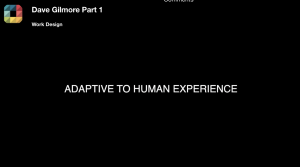 As humans, we come together and we move from this side to that side. We sit down, we stand up, we walk across, we view, we present, we do all of these different actions, which requires us to change our position, our lighting, our air, our mechanics, our technologies to accommodate human organic movement. Can the office space take on that same organic nature and become fully adaptive and flexible to how humans need that space to be? Because mostly we build a space and we force humans into these boxes as opposed to saying, ‘Hey, we’ve got it backwards’. Can we see how humans behave and design space that is adaptive to the human experience? Again, why? Because we want high productivity, high profitability, high retention of great talent, and delighted clients. That’s why we would make these kind of changes, not just because it’s in vogue, but because it has fundamental business reasons.
As humans, we come together and we move from this side to that side. We sit down, we stand up, we walk across, we view, we present, we do all of these different actions, which requires us to change our position, our lighting, our air, our mechanics, our technologies to accommodate human organic movement. Can the office space take on that same organic nature and become fully adaptive and flexible to how humans need that space to be? Because mostly we build a space and we force humans into these boxes as opposed to saying, ‘Hey, we’ve got it backwards’. Can we see how humans behave and design space that is adaptive to the human experience? Again, why? Because we want high productivity, high profitability, high retention of great talent, and delighted clients. That’s why we would make these kind of changes, not just because it’s in vogue, but because it has fundamental business reasons.Multipurpose Buildings (16:28):
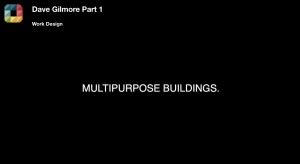 It can’t be just the office building anymore. I think that office buildings will have to become multipurpose buildings, not only for people to come and collaborate, but for people to have a small to medium to large audience gatherings, places where food services can be readily available so you don’t have to go out or you don’t have to order it in. It’s all right there. Places where people could get elementary health checks, make sure that they’re okay. In the zoo context, somebody says, I’m not feeling well, instead of sending them down the street or across the city to go get a test, how about down the hall? Let’s make sure you’re okay. And if you’re not, there’s a back way for you to get out so that you’re not infecting other people. Places for humans to come and have places to walk to enjoy outside space. The office of the future will accommodate all of this because you want people to be highly productive, highly profitable, highly retained, and clients delighted.
It can’t be just the office building anymore. I think that office buildings will have to become multipurpose buildings, not only for people to come and collaborate, but for people to have a small to medium to large audience gatherings, places where food services can be readily available so you don’t have to go out or you don’t have to order it in. It’s all right there. Places where people could get elementary health checks, make sure that they’re okay. In the zoo context, somebody says, I’m not feeling well, instead of sending them down the street or across the city to go get a test, how about down the hall? Let’s make sure you’re okay. And if you’re not, there’s a back way for you to get out so that you’re not infecting other people. Places for humans to come and have places to walk to enjoy outside space. The office of the future will accommodate all of this because you want people to be highly productive, highly profitable, highly retained, and clients delighted.WFH (17:31):
 In regards to what’s happening in the home office space, we’re seeing some significant manufacturers start to move that place. One particular who has opened up a completely new line of home office furnishings and accommodation for the home office. Why? Because they’re convinced that this hybrid work model is here to stay, so they’re investing millions upon millions of dollars to not only maintain their current product, set of product lines for the office space, but also open it up for the home office context as well.
In regards to what’s happening in the home office space, we’re seeing some significant manufacturers start to move that place. One particular who has opened up a completely new line of home office furnishings and accommodation for the home office. Why? Because they’re convinced that this hybrid work model is here to stay, so they’re investing millions upon millions of dollars to not only maintain their current product, set of product lines for the office space, but also open it up for the home office context as well.
3 Key Takeaways
- Geopolitical Dynamics Shape Economic Sentiments: Understanding geopolitical dynamics is crucial as they send reverberating waves across economies, affecting investment sentiments in various sectors including technology, healthcare, and the built environment. This awareness guides decision-making and investment strategies within the design professions.
- The Dichotomy of Progress and Challenges in Design: The design industry is experiencing a surge in innovation, with advancements in materials, technology, and understanding of digital data. However, traditional paradigms, such as fragmented project delivery methods and outdated educational approaches, hinder progress. Embracing collaboration and adapting to changing paradigms are essential for future success.
- Redefining the Workplace Experience: The pandemic has reshaped perceptions of work, leading to a reevaluation of the workplace’s role. Designing spaces that prioritize human experience, flexibility, and collaboration is crucial. Hybrid work models are likely here to stay, requiring offices to become multipurpose spaces that accommodate diverse needs and support productivity, retention, and client satisfaction. Additionally, there’s a growing focus on designing for the home office as remote work becomes more prevalent.
Resources:
Meet Dave Gilmore:
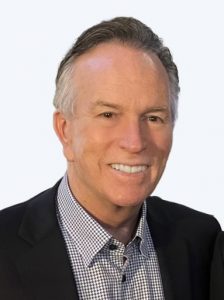
Dave Gilmore is the President & Chief Executive Officer of DesignIntelligence. He is a frequent university lecturer as well as corporate speaker across the Built Environment industry. His work involves frequent interaction with leadership teams and governance entities regarding leadership transition, business sustainability, and organizational resilience. He serves as a strategic advisor to many of the largest and most successful Built Environment industry firms in the United States. Dave is also the Founder and Managing Director of The Tricord Group, a boutique equity fund with partners in Atlanta, Boston, and Minneapolis.
Episode 8 Part 1 Credits:
- Created By Bob Fox
- Produced By Work Design Magazine
- Directed By Bob Fox
- Edited By Katie Sargent & Bob Fox
- Special Thanks to Michelle Weiss

